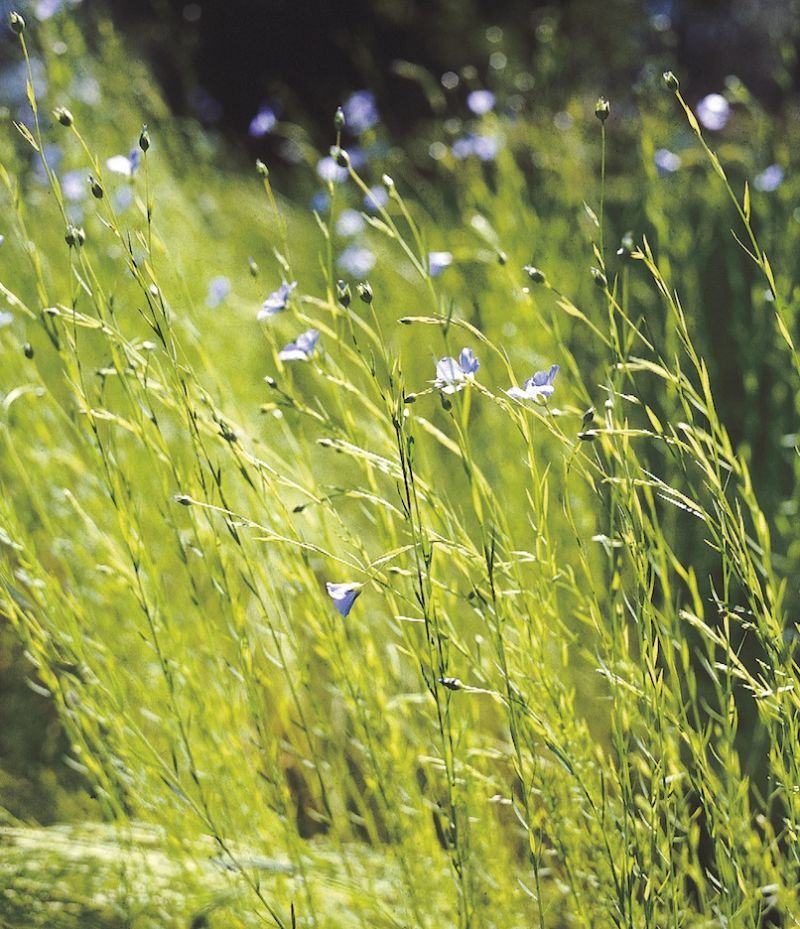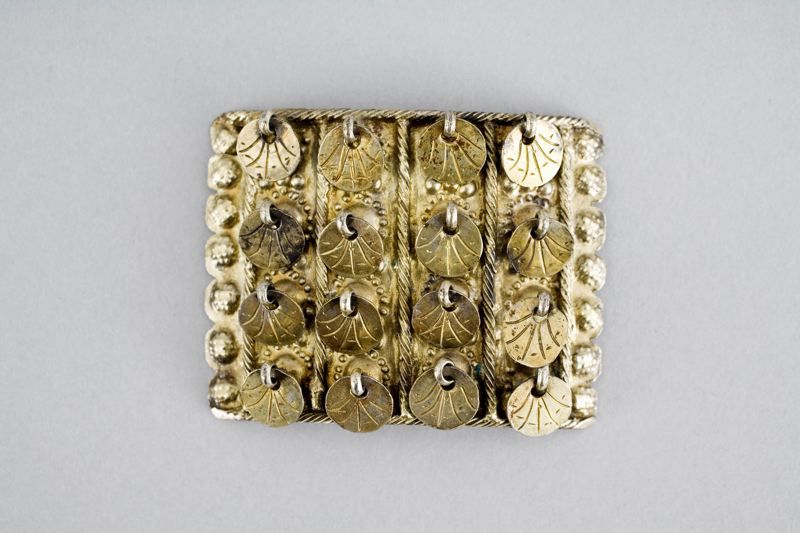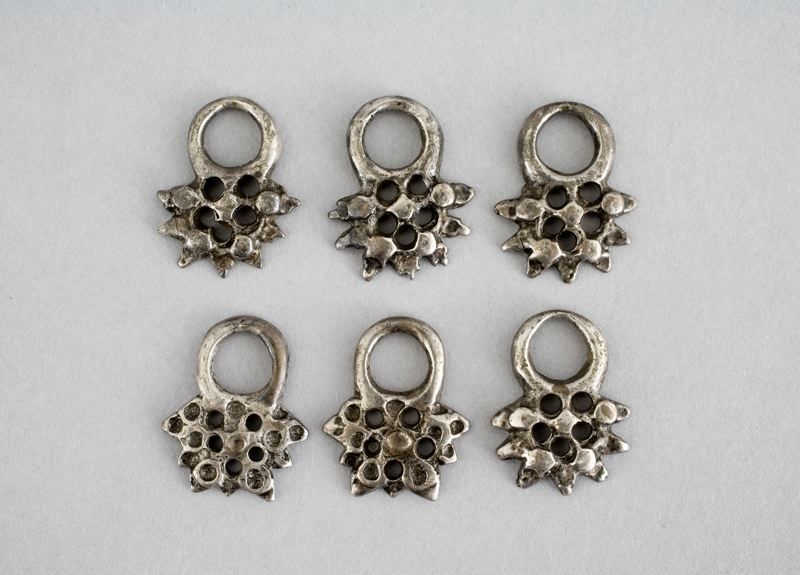ikfoundation.org
Promoting Natural & Cultural History



ESSAYS |
PROFESSIONAL WEAVERS & CHILD LABOUR
– in Malmö from 1650 to 1700
Linen weavers, stripy woollen fabrics, eiderdown-filled bolsters, silver accessories for clothing, weaving of broadcloth and child labour within textile manufacturing. These are the main subjects that will be observed via historical documents and preserved items from the Malmö area in southernmost Sweden. The previous essay in this series introduced textile furnishing from the period 1650 to 1700, particularly from the perspective of Major Knut Knutsson’s estate inventory dated 1667, which will be further examined together with a few illustrations aiding this study.
 Due to the needs of linen yarn for the professional local linen weavers, it is most probable that flax was grown in substantial quantities outside the embankments of Malmö. The further preparations with retting, breaking, swingling and heckling – before the fibre could be spun to thread and twisted to suitable qualities – may have been done both outside and within the town. (Flowering flax field in Skåne, Sweden). Photo: The IK Foundation, London.
Due to the needs of linen yarn for the professional local linen weavers, it is most probable that flax was grown in substantial quantities outside the embankments of Malmö. The further preparations with retting, breaking, swingling and heckling – before the fibre could be spun to thread and twisted to suitable qualities – may have been done both outside and within the town. (Flowering flax field in Skåne, Sweden). Photo: The IK Foundation, London.Local linen weavers foremost produced bedlinen-like sheets, pillowcases and bed curtains together with tablecloths, napkins and towels. The woollen weavers were too few in number to organise a guild of their own, so linen weavers included stripy woollen bolsters side by side with their linen production (Kjellberg 1943). Archival studies by the contemporary historian Ernst Fischer also clarified that the customers arranged the yarn themselves. Either by purchasing ready-made yarn suitable for linen weaving or by obtaining the flax, which was then spun to thread and twisted to the desired qualities by servants/wives/children/elderly relatives. The ready-spun yarns were delivered to the weaving workshop in the next stage – and the detailed order was probably put in place – so the weaver was paid for his work only.
The preserved estate inventory for Major Knut Knutsson, dated 1667, will exemplify a wealthy town family’s storage of linens:
- 12 tablecloths
- 1 tablecloth on the table with fringes
- 1 coarse tablecloth
- 4 towels
- 1 dozen coarse napkins
- 4 pairs of sheets
- 1 pair of old sheets
- 1 sheet
- 3 pairs of pillowcases
- 1 pair of old pillowcases
(to a total value of 88 Daler)
Using linen sheets and tablecloths was still a luxury in Sweden during the second half of the 17th century and, therefore, primarily part of relatively wealthy homes. The most treasured linen item in this particular family was the ‘table cloth with fringes’ valued to 12 Daler. However, patterns or weaving techniques used by the linen weavers of Malmö are not known, but plain weave and twill variations were probably dominant together with twill diapers on finer tablecloths.
Major Knut Knutsson’s estate inventory also included woollen bed textiles for comfort and warmth. Down bolsters were especially important, primarily collected from geese, swans, hens or eiders. But various other materials were in use – more or less comfortable – like feather, horsehair, hay, straw, reed, bast fibres or grass. This particular inventory list lacks a loom, so it is unlikely that cloths were woven within the home environment. Import of fabrics was modest in Malmö after 1658, depending on changes in trade routes and high taxes (as was discussed in the previous essay of this series). Due to these circumstances, woollen textiles for interior furnishing were probably either imports of older date or fabrics woven by professional local linen weavers, who produced woollen cloths as an additional branch of commerce.
 Even if Malmö in 1662, had thirteen professional linen weavers added with their respective journeymen and apprentices, it has not been possible to trace any of their former produce today. However, the Malmö Museum keeps a contemporary 17th century linen damask tablecloth in the size of 213 cm width and 159 cm length (incomplete) woven in the Netherlands. But there is no proof for that this particular textile – or other similar linen fabrics in the museum collection – were imported already at that time and used by well-to-do inhabitants in Malmö. The history of this linen is unknown from the approximate date of weaving and up to when the museum purchased the item in 1931. (Courtesy of: Malmö Museum, MM022094, Creative Commons).
Even if Malmö in 1662, had thirteen professional linen weavers added with their respective journeymen and apprentices, it has not been possible to trace any of their former produce today. However, the Malmö Museum keeps a contemporary 17th century linen damask tablecloth in the size of 213 cm width and 159 cm length (incomplete) woven in the Netherlands. But there is no proof for that this particular textile – or other similar linen fabrics in the museum collection – were imported already at that time and used by well-to-do inhabitants in Malmö. The history of this linen is unknown from the approximate date of weaving and up to when the museum purchased the item in 1931. (Courtesy of: Malmö Museum, MM022094, Creative Commons). Below is the list of woollens, etc, from Knut Knutsson’s estate inventory, placed in a chest, a bed, a bedroom and the loft.
In the chest no 7
- 2 bed bolster
- 2 down bolster
- 2 bolster
In the bed
- 3 mattresses
- 1 old down bolster
- 1 old cushion
- 3 old bed curtains
In the bedroom
- 2 mattresses
- 1 bolster
- 3 cushions
- 1 stripy cushion
- 1 cushion with woollen cloth
- 1 pair of sheets
- 1 pair of linen curtains
In the loft
- 6 old mattresses
- 3 woollen cushions
- 1 bolster
- 1 old down bolster
(to a total value of 115 Daler)
 To my knowledge neither local everyday clothing or more festive garments are preserved from this period in Malmö, but during archeological excavations a rich selection of silver items have been unearthed, once important part of the dress. This well-preserved gilded silver model for instance – found in the district Druvan in Malmö in 1888 – was used to decorate or/and hold together a upper garment at the neck. The item was probably made in the 17th century (dated to pre-1677). A design of this type has its roots in Medieval time, according to research by the historian Sigfrid Svensson in the 1970s. (Courtesy of: Malmö Museum, MM029603:011, Creative Commons).
To my knowledge neither local everyday clothing or more festive garments are preserved from this period in Malmö, but during archeological excavations a rich selection of silver items have been unearthed, once important part of the dress. This well-preserved gilded silver model for instance – found in the district Druvan in Malmö in 1888 – was used to decorate or/and hold together a upper garment at the neck. The item was probably made in the 17th century (dated to pre-1677). A design of this type has its roots in Medieval time, according to research by the historian Sigfrid Svensson in the 1970s. (Courtesy of: Malmö Museum, MM029603:011, Creative Commons). These six small silver buckles have a similar history as the item above, dated to pre-1677 and found in the same spot in 1888. Buckles of this type also have a long history back to the Medieval period and was commonly used in two or three pairs on the upper garment. A string, ribbon or silver chain was drawn through the buckles to tighten/hold together the upper part of the bodice – before the introduction of buttons and buttonholes. (Courtesy of: Malmö Museum, MM029603:015, Creative Commons).
These six small silver buckles have a similar history as the item above, dated to pre-1677 and found in the same spot in 1888. Buckles of this type also have a long history back to the Medieval period and was commonly used in two or three pairs on the upper garment. A string, ribbon or silver chain was drawn through the buckles to tighten/hold together the upper part of the bodice – before the introduction of buttons and buttonholes. (Courtesy of: Malmö Museum, MM029603:015, Creative Commons).Woollen manufacturing in conjunction with an orphanage was also introduced in the 1680s Malmö by Major Lars Persson Törnskär and a group of local citizens. Parallel to the children’s combined education/work in spinning and knitting, a textile manufacturer who engaged professional dyers and weavers produced broadcloth primarily for the needs of the army. This textile production and its financial circumstances, the educational aims for the circa fifty orphans and the conditions for child labour were thoroughly researched by Sven T Kjellberg in the 1940s, which are here exemplified:
‘The children were educated by specially trained teachers in wool production, spinning and knitting. During the period 1690–mid-1691, the knitting department produced 4-night jackets, 255 pairs of men’s socks and 63 pairs of women’s and children’s socks, whose numbers in the following year were 19, 57, 29 and 30. In the accounts for 1693, it was mentioned that the orphaned children, whose work consisted of picking wool, scrubbing, carding and spinning, did not have any other wages than food and clothes.’ (quote p. 651)
The ages of the orphans who participated in this woollen work are unknown. Some of these children were paid a small sum of money after half a year of training, partly depending on which type of work each individual was assigned – knitting was, in this context, regarded as more qualified and “valuable” than the preparation of the wool.
Notice: A large number of primary and secondary sources were used for this essay. Quotes are translated from Swedish to English. For a full Bibliography and a complete list of notes, see the Swedish article by Viveka Hansen.
Sources:
- Fischer, Ernst, Flamskvävnader i Skåne, Malmö 1962.
- Hansen, Viveka, ‘Fyra sekel Malmö textil – 1650 till 2000’, Elbogen pp. 23-91, 1999.
- Högestads & Christinehofs Fideikommis historiska arkiv, (Alum Archive, F IIIa 5, Oluf Knutsson’s estate inventory).
- Kjellberg, Sven T, Ull och Ylle, Malmö 1943.
- Malmö Museum, Sweden (Online collection, three images & information from catalogue cards).
- Svensson, Sigfrid, Folkligt dräktsilver – ur Kulturens samlingar, Västerås 1979.
ESSAYS
The iTEXTILIS is a division of The IK Workshop Society - a global and unique forum for all those interested in Natural & Cultural History from a Textile Perspective.
Open Access essays - under a Creative Commons license and free for everyone to read - by Textile historian Viveka Hansen aiming to combine her current research and printed monographs with previous projects dating back to the late 1980s. Some essays also include unique archive material originally published in other languages, made available for the first time in English, opening up historical studies previously little known outside the north European countries. Together with other branches of her work; considering textile trade, material culture, cloth manufacturing, fashion, natural dyeing and the fascinating world of early travelling naturalists – like the "Linnaean network" – from a Global history perspective.
For regular updates, and to make full use of iTEXTILIS' possibilities, we recommend fellowship by subscribing to our monthly newsletter iMESSENGER.
been copied to your clipboard




– a truly European organisation since 1988
Legal issues | Forget me | and much more...
It is free to use the information/knowledge in The IK Workshop Society so long as you follow a few rules.
 LEARN MORE
LEARN MORE








